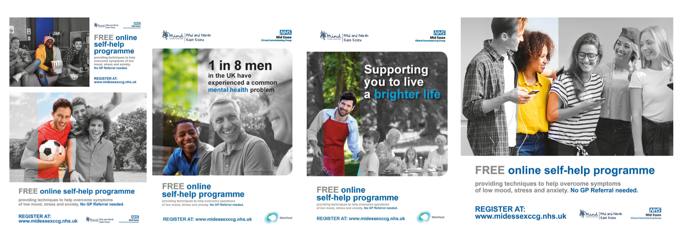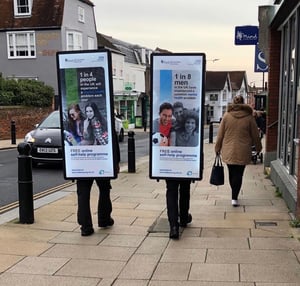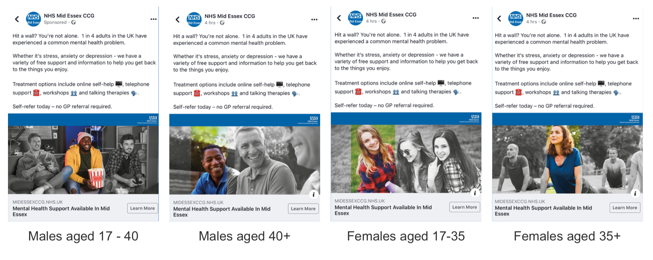Mid Essex Clinical Commissioning Group wanted to increase public awareness and engagement with SilverCloud digital therapy. To achieve this, they developed a campaign to help reduce the stigma around mental health.
The campaign
To ensure that the campaign resonated with potential service users the CCG ran focus groups to review the content. Based on this feedback they created new campaign material to portray people living with mental health issues in a positive light. Images used show people in full colour - doing every day activities. This is in contrast to images showing people looking sad or struggling and has received positive feedback.

A multi-faceted approach
 A big part of the strategy was to take a multi-faceted approach. With the knowledge that most people need to see something several times before they take action the marketing team developed a campaign with multiple touch points to maximise awareness and uptake. This included:
A big part of the strategy was to take a multi-faceted approach. With the knowledge that most people need to see something several times before they take action the marketing team developed a campaign with multiple touch points to maximise awareness and uptake. This included:
- A radio advertising campaign
- Community engagement events
- Advertising in carparks and billboards
- A mail drop
- Digital advertising
The CCG also distributed materials to Chelmsford employers, GP surgeries and community partners.
A targeted approach
For digital advertising they were able to target specific demographic groups. Adverts were targeted at 4 key audiences:

As a result, 40% of SilverCloud referrals came from Facebook advertising in October 2019.
The CCG also wanted to reach seldom-heard groups that might benefit from digital therapy and worked with the HIV clinic at Mid Essex Hospital Trust to create a bespoke leaflet for them.
The impact
The impact was positive and service referrals increased, particularly for the month of October, which saw a 176% increase on the previous month. 22% of referrals came from GPs so future plans include working more closely with GPs to make sure they are aware of patient options.
To learn more: download our case study







